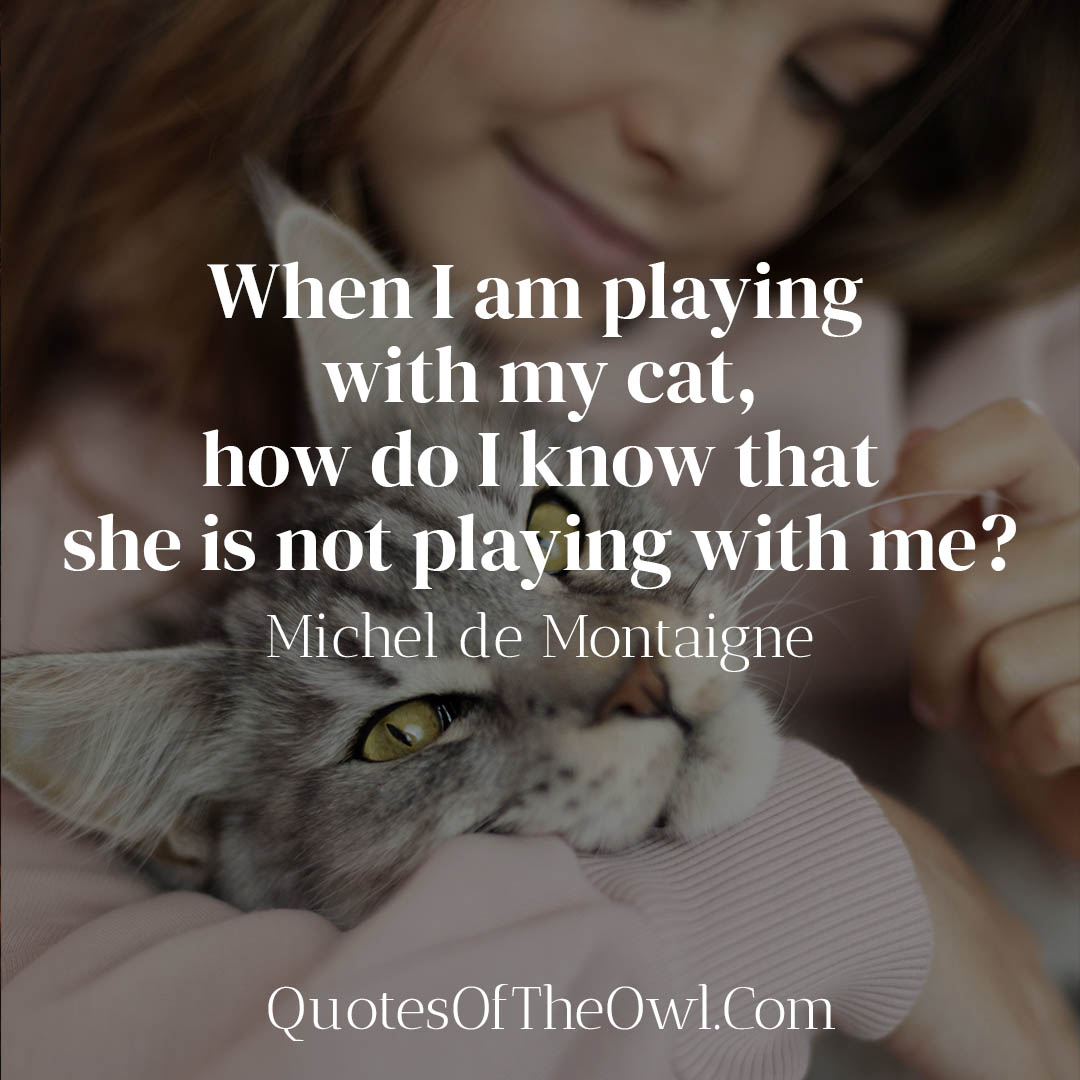When I am playing with my cat, how do I know that she is not playing with me? – Michel de Montaigne
Playing with our feline companions is a cherished pastime for many cat owners. The joy of engaging in interactive play not only entertains our pets but also strengthens the bond between human and cat. However, amidst the laughter and pouncing, there lies a question pondered by philosopher Michel de Montaigne: “When I am playing with my cat, how do I know that she is not playing with me?” This profound query delves into the intricate dynamics of human-cat interaction, prompting us to explore the subtle nuances of our furry friends’ behaviors.
Michel de Montaigne’s quote interpretation
Interpreting this quote, one could infer that Montaigne is suggesting a sense of reciprocity and ambiguity in relationships, even those between humans and animals. In the context of playing with a cat, he raises the question of whether the cat is simply enjoying the interaction for its own pleasure or if there is a deeper level of engagement where the cat may also be manipulating or amusing itself at the human’s expense.
At its core, the quote speaks to the complexity of understanding the intentions and motivations of others, whether they are human or animal. It invites reflection on the nature of companionship, communication, and the inherent mysteries within these relationships.
Recognizing genuine play in cats
To address Montaigne’s query, it is crucial to decipher the signals that indicate genuine play in cats. Playful behaviors in felines often include:
- Tail twitching: A relaxed, rhythmic movement of the tail signifies excitement and engagement in play.
- Pouncing: Cats may crouch low to the ground before leaping forward in a playful manner, mimicking hunting behavior.
- Chirping or trilling sounds: Vocalizations such as chirps or trills indicate enthusiasm and enjoyment during play.
- Soft pawing: Gentle swatting or batting motions with extended claws, typically aimed at toys or hands, signify playful intent.
Understanding these behavioral cues allows us to distinguish between genuine play and other forms of interaction.
Distinguishing between play and other behaviors
While play is a natural and essential aspect of a cat’s life, it can sometimes be mistaken for other behaviors. Common actions that may be misinterpreted as play include:
- Aggression: Cats may exhibit aggressive behaviors, such as hissing or growling, during territorial disputes or when feeling threatened.
- Predatory behavior: Certain actions, such as stalking or intense staring, may indicate a cat’s instinctual hunting instincts rather than playful intent.
- Attention-seeking: Cats may engage in attention-seeking behaviors, such as rubbing against legs or meowing incessantly, to solicit affection or food.
By observing the context and accompanying cues, cat owners can accurately discern between genuine play and other forms of behavior.
Importance of mutual understanding in human-cat relationships
Montaigne’s quote underscores the significance of mutual understanding and respect in human-cat relationships. By recognizing and reciprocating our cats’ playful gestures, we foster trust and strengthen the bond between us. Interactive play not only provides physical and mental stimulation for our feline companions but also enhances our connection with them on a deeper level.
In conclusion, playing with our cats offers a window into the intricacies of interspecies communication and companionship. Michel de Montaigne’s quote encourages us to approach these moments with mindfulness and appreciation for the unique perspectives our furry friends bring to the table.

